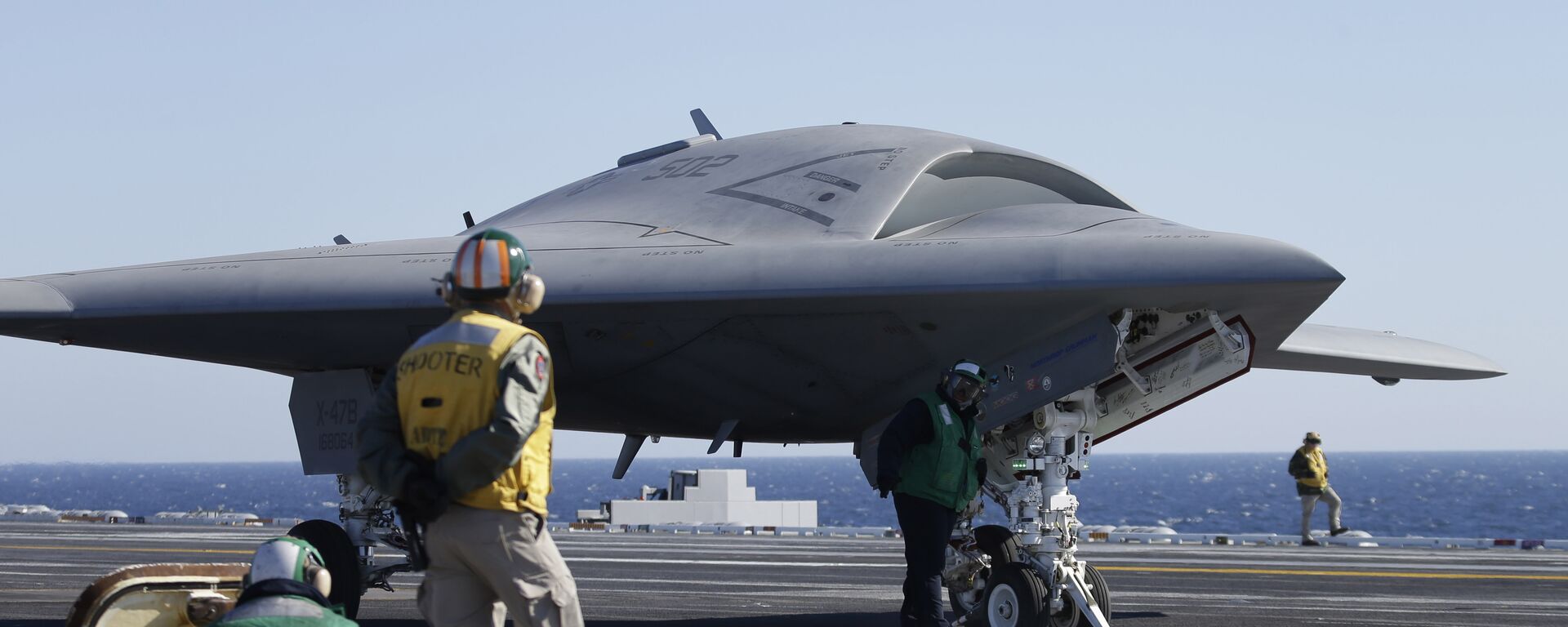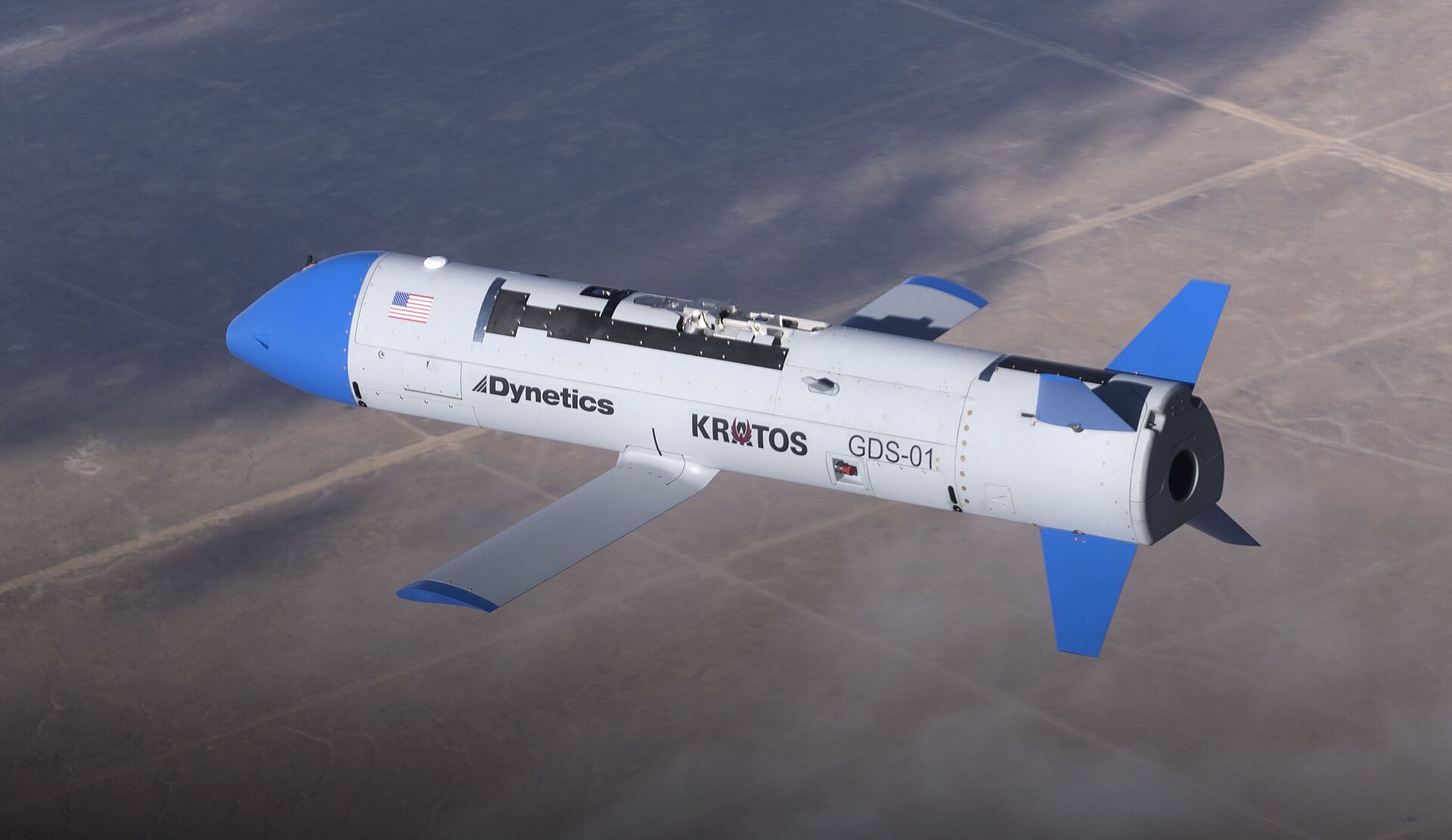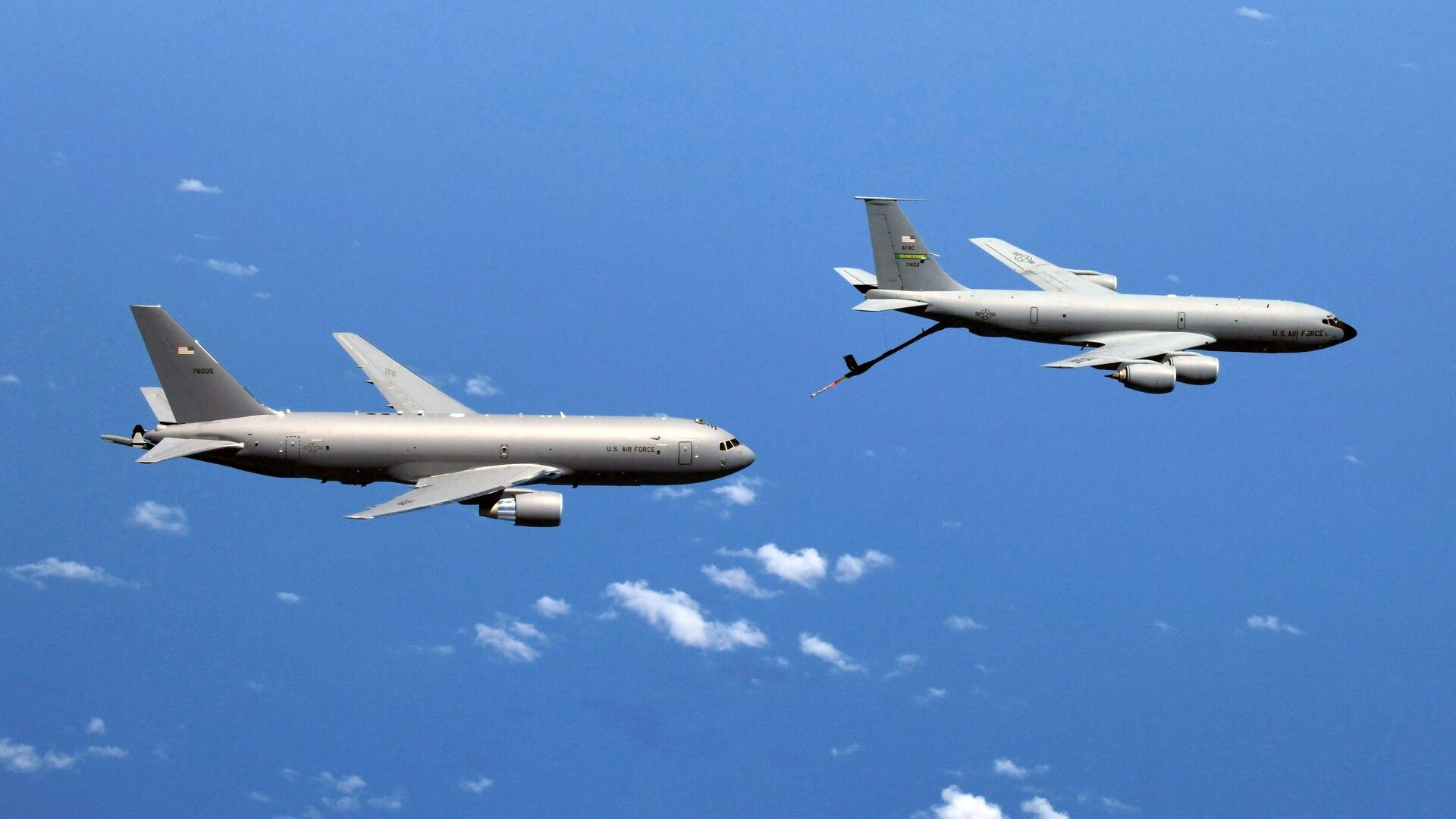https://sputnikglobe.com/20230912/usaf-looking-to-turn-tanker-aircraft-into-drone-motherships-1113316112.html
USAF Looking to Turn Tanker Aircraft into Drone Motherships
USAF Looking to Turn Tanker Aircraft into Drone Motherships
Sputnik International
Senior US Air Force brass are considering using aerial refueling aircraft to carry dozens of drones, which could be used for a variety of purposes including reconnaissance, navigation, search and rescue, and acting as decoys.
2023-09-12T16:38+0000
2023-09-12T16:38+0000
2023-09-12T16:38+0000
military
us air force
drone swarm
boeing kc-135 stratotanker
uav
https://cdn1.img.sputnikglobe.com/img/07e7/09/0c/1113315822_0:0:3072:1728_1920x0_80_0_0_eca6f543ef5154f4d9e735d6016a4903.jpg
The plan was announced at a recent industry conference by Gen. Mike Minihan, the head of the USAF’s Air Mobility Command (AMC), which manages the Pentagon’s fleet of cargo and tanker aircraft, according to US media reports.Minihan first floated the idea of drone swarms launched from KC-135 Stratotanker aircraft in an internal memo in January that was leaked to the press, in which he expressed his belief that the US was certain to find itself in a war with China by 2025."A drone could come out [of the KC-135] and it could provide [positioning, navigation, and timing, or PNT] to someone who doesn't have it,” Minihan explained. “It could fly a life vest to a downed pilot or a radio to a downed pilot. You could actually fly down and survey the runway, which you're about to land on. ... it can provide some sort of search mechanism for an enemy force if you want it or you can simply fly down and go to sleep and be there available for when you want to wake it up. ... it can provide decoys ... it can provide some sort of ELINT [electronic intelligence], some type of [intelligence] collection. ... I see that those types of things [what these drones could do] are limitless."US military assets presently get their PNT from GPS satellites in orbit, which help with everything from navigation to communication and even precision strikes for bombs and missiles. The Pentagon has been exploring alternatives to a GPS-based PNT in recent years amid concerns that the GPS network could come under attack during a future conflict with Russia or China, either from localized jamming or the destruction or disabling of the satellites themselves.It's not the first time the USAF has looked at deploying drone swarms from its fleet of large non-combat aircraft. Years of testing has aimed to turn C-130 Hercules cargo aircraft in the "motherships" of X-61A Gremlin Air Vehicles (GAV), cruise missile-sized drones developed by Dynetics and the US' Defense Advanced Research Projects Agency (DARPA), a Pentagon-funded R&D firm.What Minihan hasn't explained yet is how the drone launching and recovery system would actually work in a KC-135. In the C-130, the drones launch and return to the aircraft's cargo bay via the open rear gangway, but in a KC-135, such internal space is occupied by a plethora of jet fuel tanks destined for thirsty aircraft that are far from their home bases.
https://sputnikglobe.com/20230830/us-plan-to-flood-pacific-with-ai-driven-drones-risks-uncontrollable-escalation-with-china-1112995388.html
Sputnik International
feedback@sputniknews.com
+74956456601
MIA „Rossiya Segodnya“
2023
News
en_EN
Sputnik International
feedback@sputniknews.com
+74956456601
MIA „Rossiya Segodnya“
Sputnik International
feedback@sputniknews.com
+74956456601
MIA „Rossiya Segodnya“
kc-135 tanker; drone swarm; us air force
kc-135 tanker; drone swarm; us air force
USAF Looking to Turn Tanker Aircraft into Drone Motherships
Senior brass in the US Air Force (USAF) are considering whether it’s possible to use aerial refueling aircraft to carry dozens of drones as well, which could be used for a variety of purposes including reconnaissance, navigation, search and rescue, and acting as decoys.
The plan was announced at a recent industry conference by Gen. Mike Minihan, the head of the USAF’s Air Mobility Command (AMC), which manages the Pentagon’s fleet of cargo and tanker aircraft, according to US media reports.
Minihan first floated the idea of drone swarms launched from
KC-135 Stratotanker aircraft in an internal memo in January that was leaked to the press, in which he expressed his belief that the US was certain to find itself in a
war with China by 2025.
"Still driving towards that, you know, and, and I think we will be successful," Minihan said about the drone swarm program at the Monday conference. "Hopefully, you know, [it will happen] during my time at AMC... [but] what it takes to get it from operational concept to program a record, probably a little more challenging."

30 August 2023, 18:06 GMT
"A drone could come out [of the KC-135] and it could provide [positioning, navigation, and timing, or PNT] to someone who doesn't have it,” Minihan explained. “It could fly a life vest to a downed pilot or a radio to a downed pilot. You could actually fly down and survey the runway, which you're about to land on. ... it can provide some sort of search mechanism for an enemy force if you want it or you can simply fly down and go to sleep and be there available for when you want to wake it up. ... it can provide decoys ... it can provide some sort of ELINT [electronic intelligence], some type of [intelligence] collection. ... I see that those types of things [what these drones could do] are limitless."
US military assets presently get their PNT from GPS satellites in orbit, which help with everything from navigation to communication and even precision strikes for bombs and missiles. The Pentagon has been exploring
alternatives to a GPS-based PNT in recent years amid concerns that the GPS network
could come under attack during a future conflict with Russia or China, either from localized jamming or the
destruction or disabling of the satellites themselves.
The KC-135 is built by Boeing and based on the 367-80 prototype aircraft, which also served as the inspiration for Boeing's 707 airliner. It was introduced in 1957. It has long been scheduled to be replaced by the Boeing KC-46 Pegasus, although that program has suffered repeated setbacks and cost overruns.
It's not the first time the USAF has looked at deploying drone swarms from its fleet of large non-combat aircraft. Years of testing has aimed to turn C-130 Hercules cargo aircraft in the
"motherships" of X-61A Gremlin Air Vehicles (GAV), cruise missile-sized drones developed by Dynetics and the US' Defense Advanced Research Projects Agency (DARPA), a Pentagon-funded R&D firm.
What Minihan hasn't explained yet is how the drone launching and recovery system would actually work in a KC-135. In the C-130, the drones launch and return to the aircraft's cargo bay via the open rear gangway, but in a KC-135, such internal space is occupied by a plethora of jet fuel tanks destined for thirsty aircraft that are far from their home bases.




